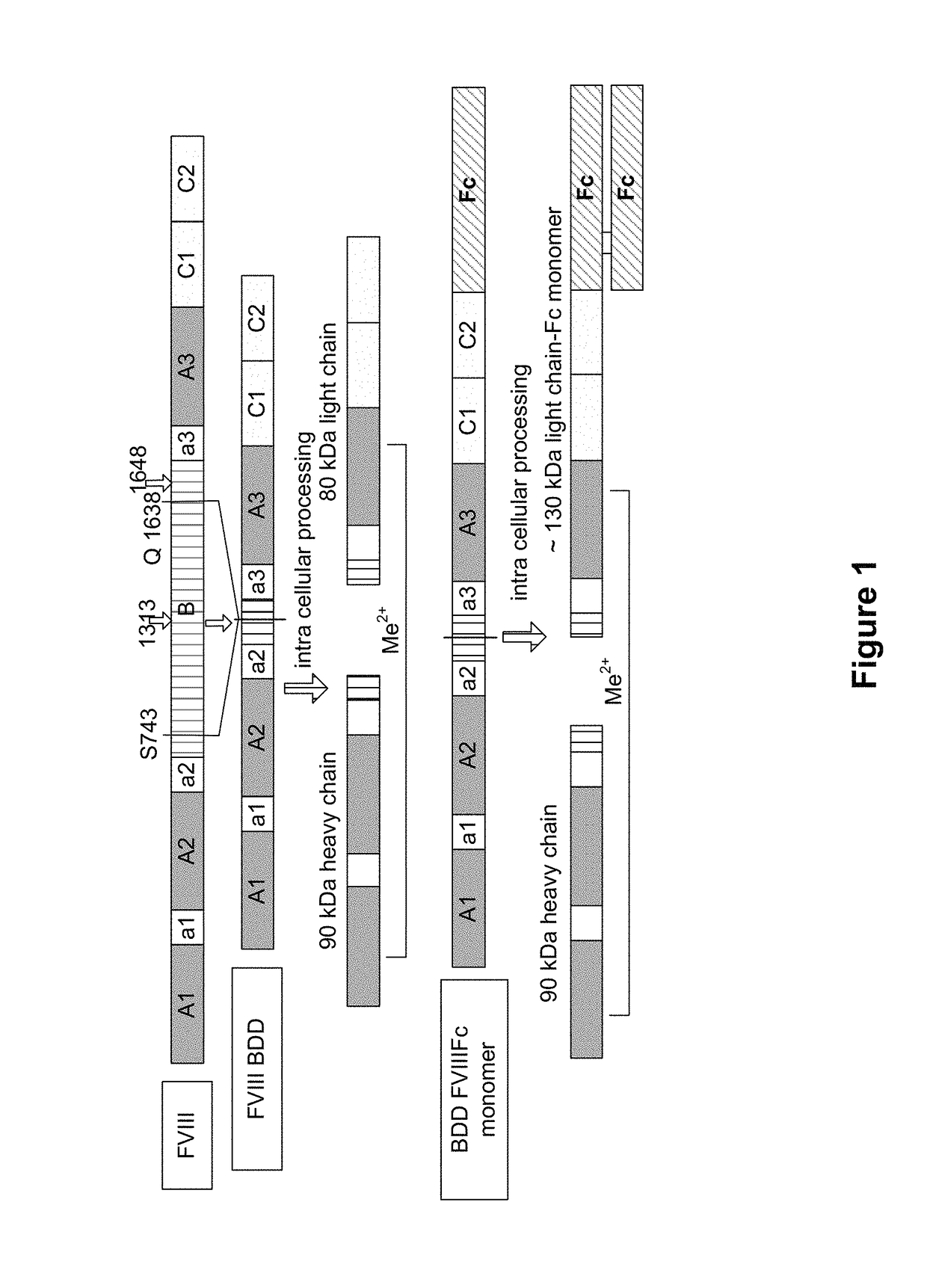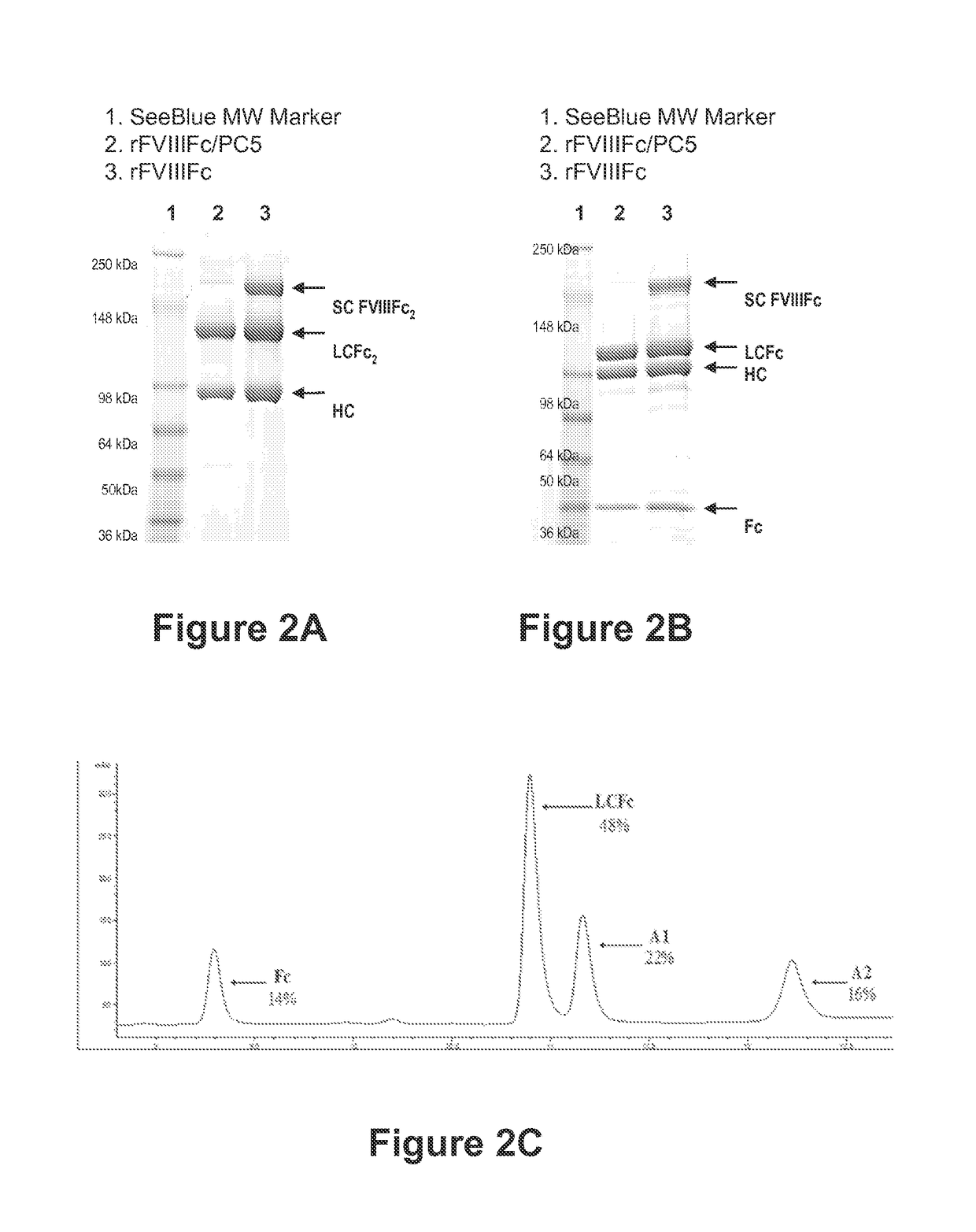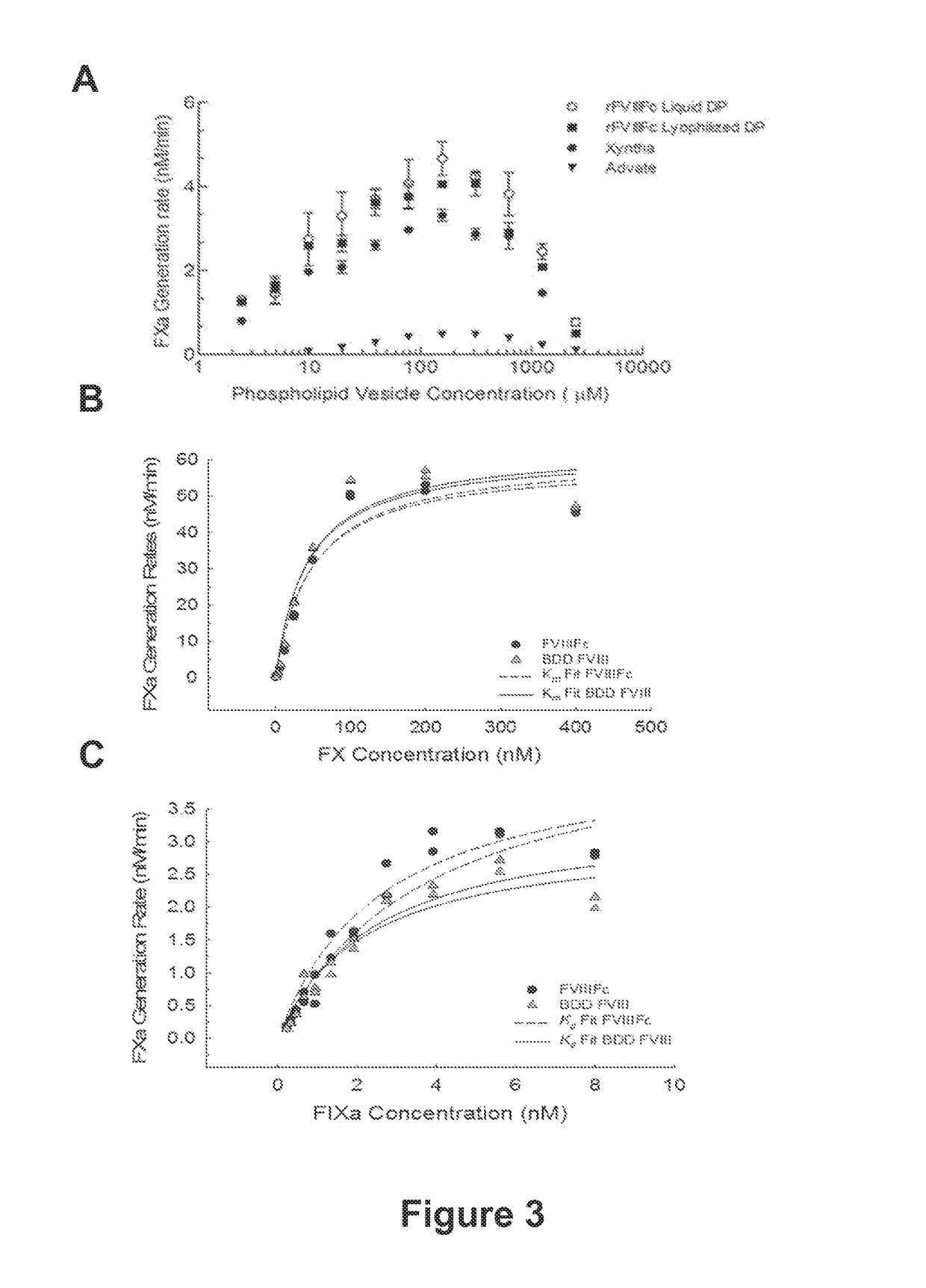Methods of reducing immunogenicity against factor VIII in individuals undergoing factor VIII therapy
a factor viii and immunogenicity technology, applied in the field of hemostatic disorders, can solve the problems of lack of response to fviii therapy, high fviii consumption, increased bleeding tendency, etc., and achieve the effect of reducing the incidence of spontaneous bleeding, and provoking fviii immune toleran
- Summary
- Abstract
- Description
- Claims
- Application Information
AI Technical Summary
Benefits of technology
Problems solved by technology
Method used
Image
Examples
embodiments
[0355]E1. A method of inducing immune tolerance to a clotting factor in a subject in need thereof comprising administering to the subject a chimeric polypeptide, wherein the chimeric polypeptide comprises a clotting factor portion and an Fc portion.
[0356]E2. A method of preventing or inhibiting development of an inhibitor to a clotting factor comprising administering to a subject in need of immune tolerance to the clotting factor a chimeric polypeptide, wherein the chimeric polypeptide comprises a clotting factor portion and an Fc portion.
[0357]E3. The method of embodiment E1 or E2, wherein the subject would develop an inhibitory immune response against the clotting factor if administered an equivalent dose of a polypeptide consisting of the clotting factor.
[0358]E4. The method of any one of embodiments E1 to E3, wherein the subject has developed an inhibitory immune response against the clotting factor.
[0359]E5. The method of any one of embodiments E1 to E4, wherein the subject has...
example 1
Cloning, Expression and Purification of rFVIIIFc
[0450]All molecular biology procedures were performed following standard techniques. The coding sequence of human FVIII (Genbank accession number NM 000132), including its native signal sequence, was obtained by reverse transcription-polymerase chain reactions (RT-PCR) from human liver polyA RNA. Due to the large size of FVIII, the coding sequence was obtained in several sections from separate RT-PCR reactions, and assembled through a series of PCR reactions, restriction digests and ligations into an intermediate cloning vector containing a B domain deleted (BDD) FVIII coding region with a fusion of serine 743 (S743) to glutamine 1638 (Q1638), eliminating 2682 bp from the B domain of full length FVIII. The human IgG1 Fc sequence (e.g., GenBank accession number Y14735) was obtained by PCR from a leukocyte cDNA library, and the final expression cassette was made in such a way that the BDD FVIII sequence was fused directly to the N-termin...
example 2
Characterization of rFVIIIFc
[0452](a) Biochemical Characterization
[0453]Processed recombinant FVIII-Fc (rFVIIIFc) was synthesized as two polypeptide chains, one chain consisting of BDD-FVIII (S743-Q1638 fusion, 1438 amino acids) fused to the Fc domain (hinge, CH2 and CH3 domains) of IgG1 (226 amino acids, extending from D221 to G456, EU numbering), for a total chain length of 1664 amino acids, the other chain consisting of the same Fc region alone (226 amino acids). Though cells transfected with the FVIIIFc / Fc dual expression plasmid were expected to secrete three products (FVIIIFc dimer, FVIIIFc monomer, and Fc dimer), only the FVIIIFc monomer and Fc dimer were detected in conditioned media. Purified FVIIIFc was analyzed by non-reducing and reducing SDS-PAGE analysis (FIGS. 2A and 2B). For the nonreduced SDS-PAGE, bands were found migrating at approximately 90 kDa and 130 kDa, consistent with the predicted molecular weights of the FVIIIFc heavy chain (HC) and light chain-dimeric Fc...
PUM
 Login to View More
Login to View More Abstract
Description
Claims
Application Information
 Login to View More
Login to View More - R&D
- Intellectual Property
- Life Sciences
- Materials
- Tech Scout
- Unparalleled Data Quality
- Higher Quality Content
- 60% Fewer Hallucinations
Browse by: Latest US Patents, China's latest patents, Technical Efficacy Thesaurus, Application Domain, Technology Topic, Popular Technical Reports.
© 2025 PatSnap. All rights reserved.Legal|Privacy policy|Modern Slavery Act Transparency Statement|Sitemap|About US| Contact US: help@patsnap.com



